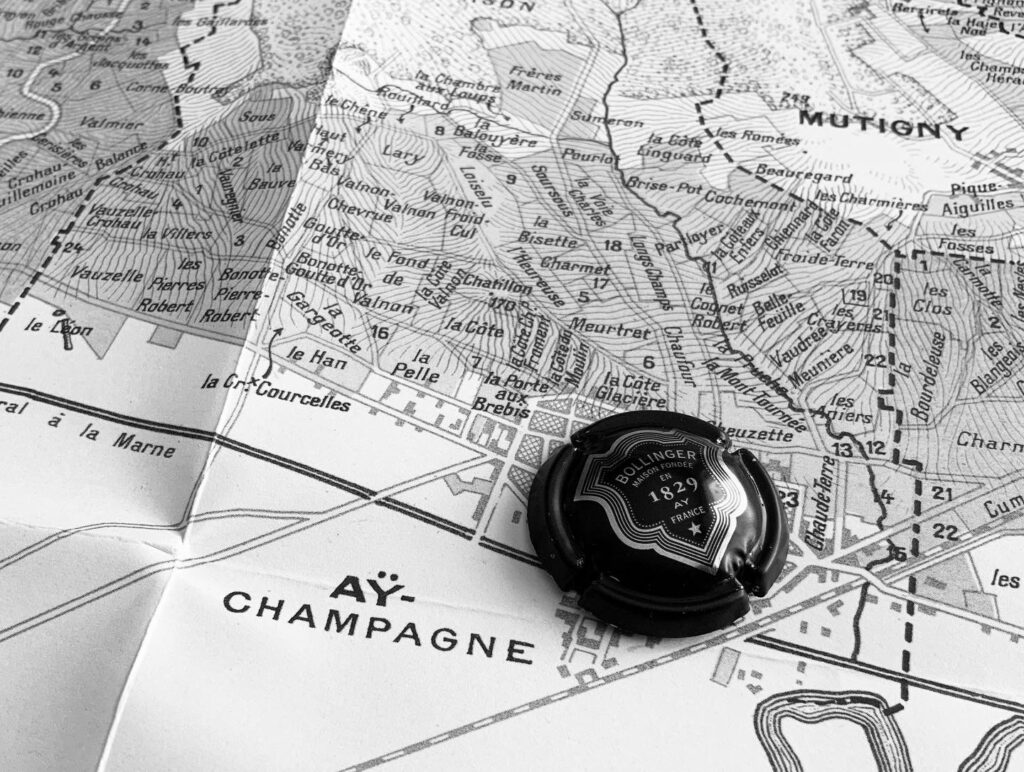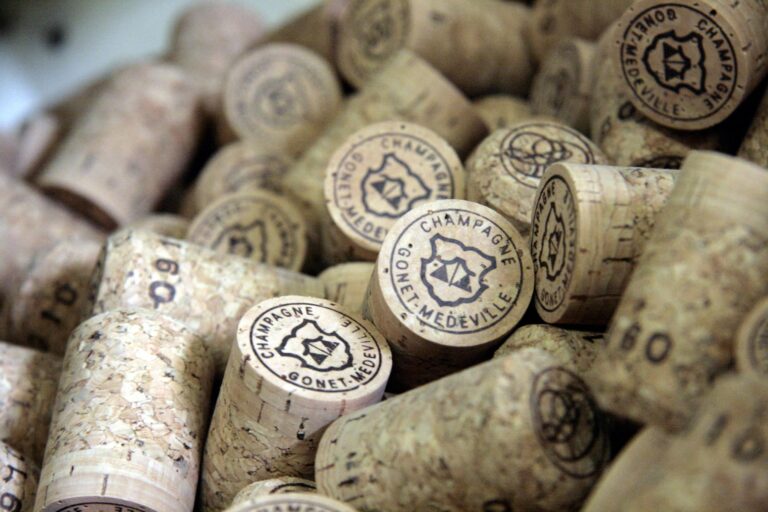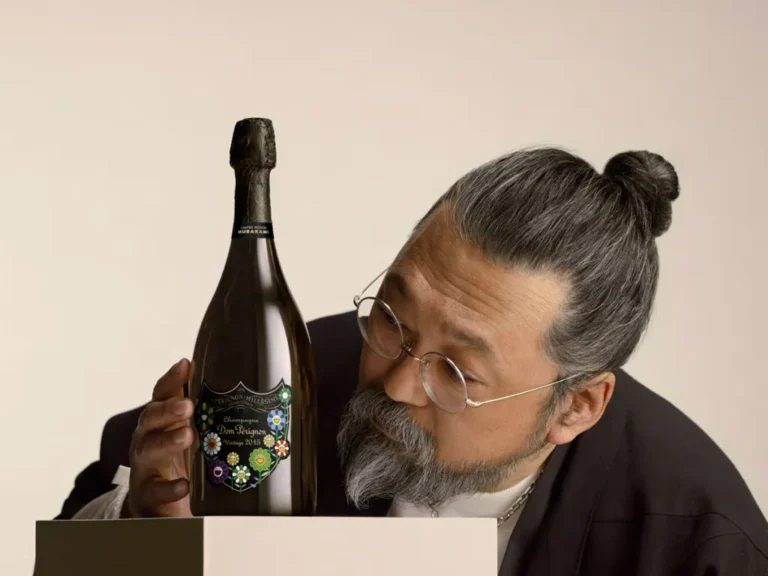Parcel-based Champagnes, also referred to as single-parcel or single-vineyard Champagnes, are crafted exclusively from grapes harvested from a specific vineyard plot. [read the full champagne story]
Estimated reading time: 9 minutes

Exploring the World of Parcel-Based Champagnes
The Champagne region of France is renowned for its sparkling wines, a product of centuries-old traditions and meticulous craftsmanship. While the traditional method of producing Champagne often involves blending grapes from various vineyards and parcels to achieve a house style, a growing movement focuses on a more singular approach: parcel-based Champagnes. These wines celebrate the unique characteristics of individual plots of land, offering wine lovers an intimate connection to the terroir. In this extensive exploration, we delve into the essence, production, history, and significance of parcel-based Champagnes, highlighting their impact on the world of sparkling wines.
I. Introduction to Parcel-Based Champagnes
What Are Parcel-Based Champagnes?
Parcel-based Champagnes, also referred to as single-parcel or single-vineyard Champagnes, are crafted exclusively from grapes harvested from a specific vineyard plot. Unlike traditional blends, these wines focus on expressing the distinct characteristics of a single parcel, emphasizing the soil, microclimate, and other environmental factors that influence grape development.
Why Are They Significant?
In a region where blending has long been the hallmark of Champagne production, parcel-based Champagnes represent a shift toward authenticity and terroir-driven wines. They allow producers to showcase the diversity within Champagne’s landscape and provide consumers with an unparalleled tasting experience that reflects a wine’s true origins.

II. The Concept of Parcels in Champagne
Definition of a Parcel
In the Champagne region, a parcel refers to a small, distinct plot of vineyard land. These parcels can vary significantly in terms of size, soil composition, slope, altitude, and sun exposure, all of which contribute to the grapes’ unique flavor profiles.
Historical Context
The fragmented nature of vineyard ownership in Champagne is rooted in history. Over centuries, vineyards were divided through inheritance and sales, leading to smaller plots managed by different producers. This historical context has given rise to a region where meticulous attention to individual parcels is not only possible but often necessary.
Diversity of Terroir
Champagne’s diverse terroir is one of its defining characteristics. From chalky soils in the Côte des Blancs to the clay-limestone soils in Montagne de Reims, each parcel offers a unique environment for vine growth. Parcel-based Champagnes highlight these distinctions, allowing wine enthusiasts to explore the region’s complexity.
III. Characteristics of Parcel-Based Champagnes
1. Expression of Terroir
• Parcel-based Champagnes are the ultimate expression of terroir, encapsulating the essence of the land where the grapes are grown.
• These wines reveal nuances in flavor and aroma that are specific to their parcel, providing a more authentic representation of the Champagne region.
2. Limited Production
• Due to the small size of parcels, production is often limited, making these Champagnes rare and sought-after.
• The exclusivity of these wines adds to their allure, particularly for collectors and connoisseurs.
3. Winemaking Craftsmanship
• Producing parcel-based Champagnes requires an intimate understanding of the vineyard.
• Winemakers must adapt their techniques to suit the specific conditions of the parcel, ensuring the wine reflects its unique origins.
4. Authenticity and Individuality
• Each bottle of parcel-based Champagne tells a story, offering a singular experience that distinguishes it from blended wines.
• These wines celebrate individuality over uniformity, appealing to those seeking a deeper connection to the wine’s source.

IV. The Production Process
Vineyard Management
Managing a parcel demands precision. Vines are cultivated with careful consideration of the parcel’s unique characteristics, including soil health, drainage, and exposure to sunlight. Organic or biodynamic practices are often employed to enhance the natural expression of the terroir.
Harvesting
Grapes are harvested by hand to ensure only the best fruit is selected. Since parcel-based Champagnes focus on a single vineyard, maintaining the integrity of the grapes is paramount.
Vinification
The vinification process for parcel-based Champagnes is tailored to highlight the vineyard’s unique qualities. Minimal intervention and the use of indigenous yeasts are common practices. Some producers use oak barrels to add complexity and texture while preserving the essence of the terroir.
Aging
These Champagnes are aged on lees for extended periods, allowing flavors to develop and integrate. The aging process enhances the wine’s complexity and ensures a refined mousse.
V. The Appeal of Parcel-Based Champagnes
1. For Consumers
• Parcel-based Champagnes offer a deeper connection to the wine’s origin, making them appealing to enthusiasts who value authenticity.
• They provide an opportunity to explore the diversity of Champagne’s terroir in a way that blends cannot.
2. For Collectors
• The limited production and unique characteristics of parcel-based Champagnes make them highly collectible.
• Their rarity and craftsmanship often translate into higher value on the secondary market.
3. For Producers
• For winemakers, crafting parcel-based Champagnes is a labor of love, allowing them to showcase their skills and the potential of their vineyards.
• It offers a way to stand out in a crowded market, appealing to niche audiences who appreciate fine details.

VI. Notable Producers of Parcel-Based Champagnes
1. Ulysse Collin
Renowned for its single-vineyard expressions, Ulysse Collin produces parcel-based Champagnes that have garnered international acclaim. Notable examples include ‘Les Pierrières,’ ‘Les Maillons,’ and ‘Les Roises.’
2. Agrapart & Fils
This family-run estate specializes in terroir-driven Champagnes, with a focus on organic and biodynamic farming. Their single-parcel wines highlight the best of the Côte des Blancs.
3. Jacques Selosse
A pioneer in terroir expression, Jacques Selosse’s Champagnes are celebrated for their complexity and individuality. His commitment to biodynamic practices further enhances the uniqueness of his wines.
VII. Ten exceptional examples of single-parcel or single-vineyard Champagnes
Here are ten exceptional examples of single-parcel (or single-vineyard) Champagnes, showcasing the artistry and diversity of terroir expression in the Champagne region:
1. Ulysse Collin – “Les Pierrières”
• Terroir: Côteaux Sud d’Épernay
• Grape Variety: Chardonnay
• Tasting Notes: Mineral-driven with vibrant citrus, white flowers, and a saline finish, reflecting the chalky soils of the vineyard.
• Why It’s Notable: One of the most iconic single-parcel Champagnes, exemplifying purity and precision.
2. Jacques Selosse – “Les Carelles”
• Terroir: Le Mesnil-sur-Oger, Côte des Blancs
• Grape Variety: Chardonnay
• Tasting Notes: Rich and complex, with notes of roasted nuts, honey, and brioche, balanced by vibrant acidity.
• Why It’s Notable: Selosse’s biodynamic approach and meticulous care bring out the terroir’s unique characteristics.
3. Egly-Ouriet – “Les Crayères”
• Terroir: Ambonnay, Montagne de Reims
• Grape Variety: Pinot Noir
• Tasting Notes: Intense red fruit, earthy undertones, and a creamy texture with a long, elegant finish.
• Why It’s Notable: A benchmark for single-parcel Champagnes showcasing Pinot Noir’s potential.
4. Philipponnat – “Clos des Goisses”
• Terroir: Mareuil-sur-Aÿ
• Grape Variety: Blend of Pinot Noir and Chardonnay
• Tasting Notes: Full-bodied with ripe stone fruits, hazelnuts, and a touch of spice, balanced by remarkable freshness.
• Why It’s Notable: One of the most famous vineyard sites in Champagne, with a history dating back centuries.
5. Billecart-Salmon – “Clos Saint-Hilaire”
• Terroir: Mareuil-sur-Aÿ
• Grape Variety: Pinot Noir
• Tasting Notes: Deep and concentrated, with notes of blackberries, licorice, and subtle smoky undertones.
• Why It’s Notable: Produced from a single hectare of old vines, reflecting extraordinary care and craftsmanship.
6. Agrapart & Fils – “Venus”
• Terroir: Avize, Côte des Blancs
• Grape Variety: Chardonnay
• Tasting Notes: Elegant and refined, with flavors of green apple, citrus zest, and chalky minerality.
• Why It’s Notable: Named after the horse that plows the vineyard, highlighting Agrapart’s commitment to natural farming.
7. Pierre Péters – “Les Chétillons”
• Terroir: Le Mesnil-sur-Oger, Côte des Blancs
• Grape Variety: Chardonnay
• Tasting Notes: Crisp and vibrant, with notes of lemon, pear, and toasted almonds, finishing with a mineral edge.
• Why It’s Notable: A revered expression of Grand Cru terroir, emphasizing precision and elegance.
8. Laherte Frères – “Les Empreintes”
• Terroir: Chavot, Vallée de la Marne
• Grape Variety: Blend of Pinot Noir and Chardonnay
• Tasting Notes: Complex layers of ripe orchard fruits, honey, and spice, with a harmonious balance of freshness and richness.
• Why It’s Notable: A biodynamic single-parcel Champagne showcasing diversity in grape expression.
9. De Sousa – “Cuvée Mycorhize”
• Terroir: Avize, Côte des Blancs
• Grape Variety: Chardonnay
• Tasting Notes: Floral and vibrant, with flavors of citrus, green apple, and a pronounced chalky minerality.
• Why It’s Notable: Produced with biodynamic principles and a focus on natural mycorrhization in the vineyard.
10. Chartogne-Taillet – “Les Barres”
• Terroir: Merfy, Montagne de Reims
• Grape Variety: Pinot Meunier
• Tasting Notes: Rich and textured, with notes of red apple, honey, and a subtle smoky minerality.
• Why It’s Notable: Made from ungrafted vines, offering a rare and unique expression of Pinot Meunier.
These single-parcel Champagnes exemplify the diversity and excellence of terroir-driven winemaking, providing an intimate window into the Champagne region’s rich landscapes and traditions.

VIII. Challenges in Producing Parcel-Based Champagnes
1. Vineyard Management
• Small parcels require intensive labor and meticulous care, increasing production costs.
2. Climate Variability
• Champagne’s challenging climate can affect yield and grape quality, particularly in small parcels where there is less room for error.
3. Market Challenges
• Educating consumers about the value of parcel-based Champagnes is essential but can be challenging in a market dominated by blends.
IX. Conclusion
Parcel-based Champagnes represent the intersection of tradition, innovation, and artistry in winemaking. They offer a profound connection to the land, providing wine lovers with a unique opportunity to experience Champagne’s diverse terroirs. While their production demands exceptional skill and dedication, the result is a wine that transcends the ordinary, capturing the spirit of a single vineyard in every bottle. As more producers embrace this approach, the future of parcel-based Champagnes shines bright, promising a new era of authenticity and terroir-driven excellence in the world of sparkling wines.






